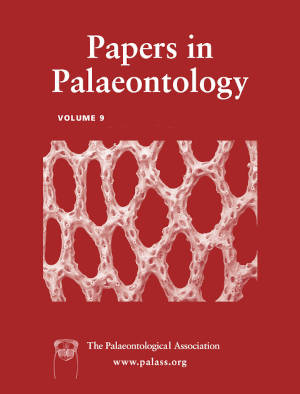Article: Three-dimensional reconstruction of the in situ mode of life of the Cambrian coral Cambroctoconus: asexual reproduction and colony growth in immediate response to cryptic habitats
Publication: Papers in Palaeontology
Volume:
9
Part:
3
Publication Date:
2023
Article number:
e1497
Author(s):
Yoichi Ezaki, Mei Kishida, Yusuke Takeda, Natsuko Adachi, Jianbo Liu, and Yasuhiro Iba
DOI:
10.1002/spp2.1497
Abstract
Abstract The Cambrian cnidarian Cambroctoconus orientalis occurs in clusters exhibiting pendent growth in crypts within thrombolite frameworks. Here we successfully reconstruct its three-dimensional (3D) in situ mode of life. The 3D reconstruction shows the initial individuals of colonies and attachment structures, budding sites and growth modes of coralla in response to the extent of sheltered spaces. The earliest individuals were attached to the framework by a suction-cup-like structure and were basically orthogonal to the walls, growing downward. Their calicular bases were pierced by a hole. Individuals were initially cylindrical and gradually formed an octagonal column during growth. Budding occurred everywhere, and toroidal budding traces are abundant upon the corallite surfaces. The attachment structures were secondarily reinforced by continuous secretion from the coenenchymal tissue. Offsets continued to grow only when sufficient growth space was available, while producing as many individuals as possible. Growth of individuals was commonly halted by the surrounding framework. Growth directions were in part modified by corallite curvature to avoid collisions between corallites and to make full use of the intricate void spaces. In deteriorating conditions, offset corallites appeared through regeneration rather than budding from the remaining soft tissues. Active exploitation of the sheltered spaces within thrombolites, which remained dominant during the Cambrian, was thus conducted by C. orientalis. Notably, the cryptobionts treated herein adopted subtle growth strategies that have not previously been fully understood and are not easily interpreted with reference to organisms living in open spaces.
